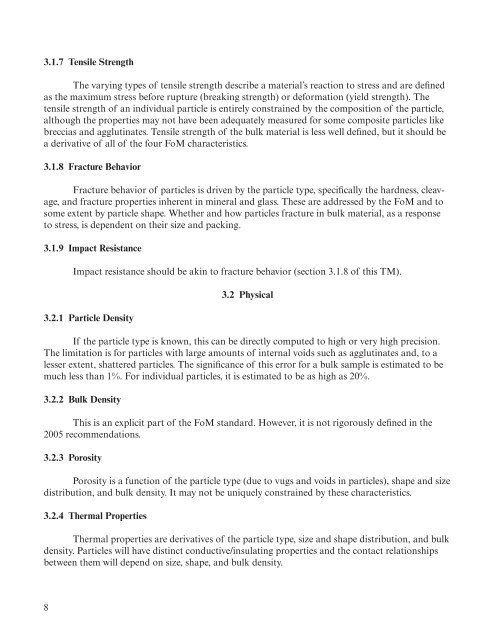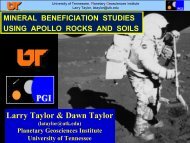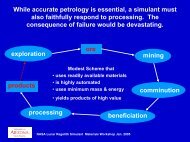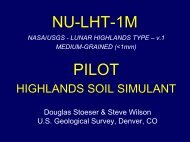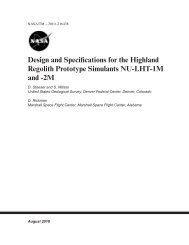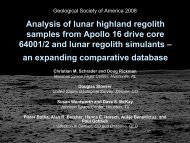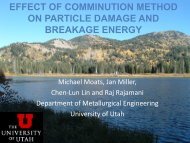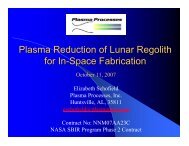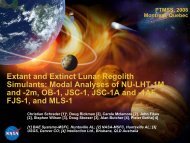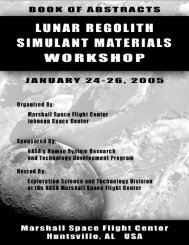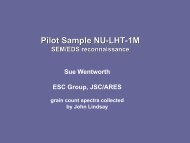Figure of Merit Characteristics Compared to Engineering Parameters
Figure of Merit Characteristics Compared to Engineering Parameters
Figure of Merit Characteristics Compared to Engineering Parameters
You also want an ePaper? Increase the reach of your titles
YUMPU automatically turns print PDFs into web optimized ePapers that Google loves.
3.1.7 Tensile StrengthThe varying types <strong>of</strong> tensile strength describe a material’s reaction <strong>to</strong> stress and are definedas the maximum stress before rupture (breaking strength) or deformation (yield strength). Thetensile strength <strong>of</strong> an individual particle is entirely constrained by the composition <strong>of</strong> the particle,although the properties may not have been adequately measured for some composite particles likebreccias and agglutinates. Tensile strength <strong>of</strong> the bulk material is less well defined, but it should bea derivative <strong>of</strong> all <strong>of</strong> the four FoM characteristics.3.1.8 Fracture BehaviorFracture behavior <strong>of</strong> particles is driven by the particle type, specifically the hardness, cleavage,and fracture properties inherent in mineral and glass. These are addressed by the FoM and <strong>to</strong>some extent by particle shape. Whether and how particles fracture in bulk material, as a response<strong>to</strong> stress, is dependent on their size and packing.3.1.9 Impact ResistanceImpact resistance should be akin <strong>to</strong> fracture behavior (section 3.1.8 <strong>of</strong> this TM).3.2.1 Particle Density3.2 PhysicalIf the particle type is known, this can be directly computed <strong>to</strong> high or very high precision.The limitation is for particles with large amounts <strong>of</strong> internal voids such as agglutinates and, <strong>to</strong> alesser extent, shattered particles. The significance <strong>of</strong> this error for a bulk sample is estimated <strong>to</strong> bemuch less than 1%. For individual particles, it is estimated <strong>to</strong> be as high as 20%.3.2.2 Bulk DensityThis is an explicit part <strong>of</strong> the FoM standard. However, it is not rigorously defined in the2005 recommendations.3.2.3 PorosityPorosity is a function <strong>of</strong> the particle type (due <strong>to</strong> vugs and voids in particles), shape and sizedistribution, and bulk density. It may not be uniquely constrained by these characteristics.3.2.4 Thermal PropertiesThermal properties are derivatives <strong>of</strong> the particle type, size and shape distribution, and bulkdensity. Particles will have distinct conductive/insulating properties and the contact relationshipsbetween them will depend on size, shape, and bulk density.8


